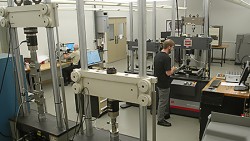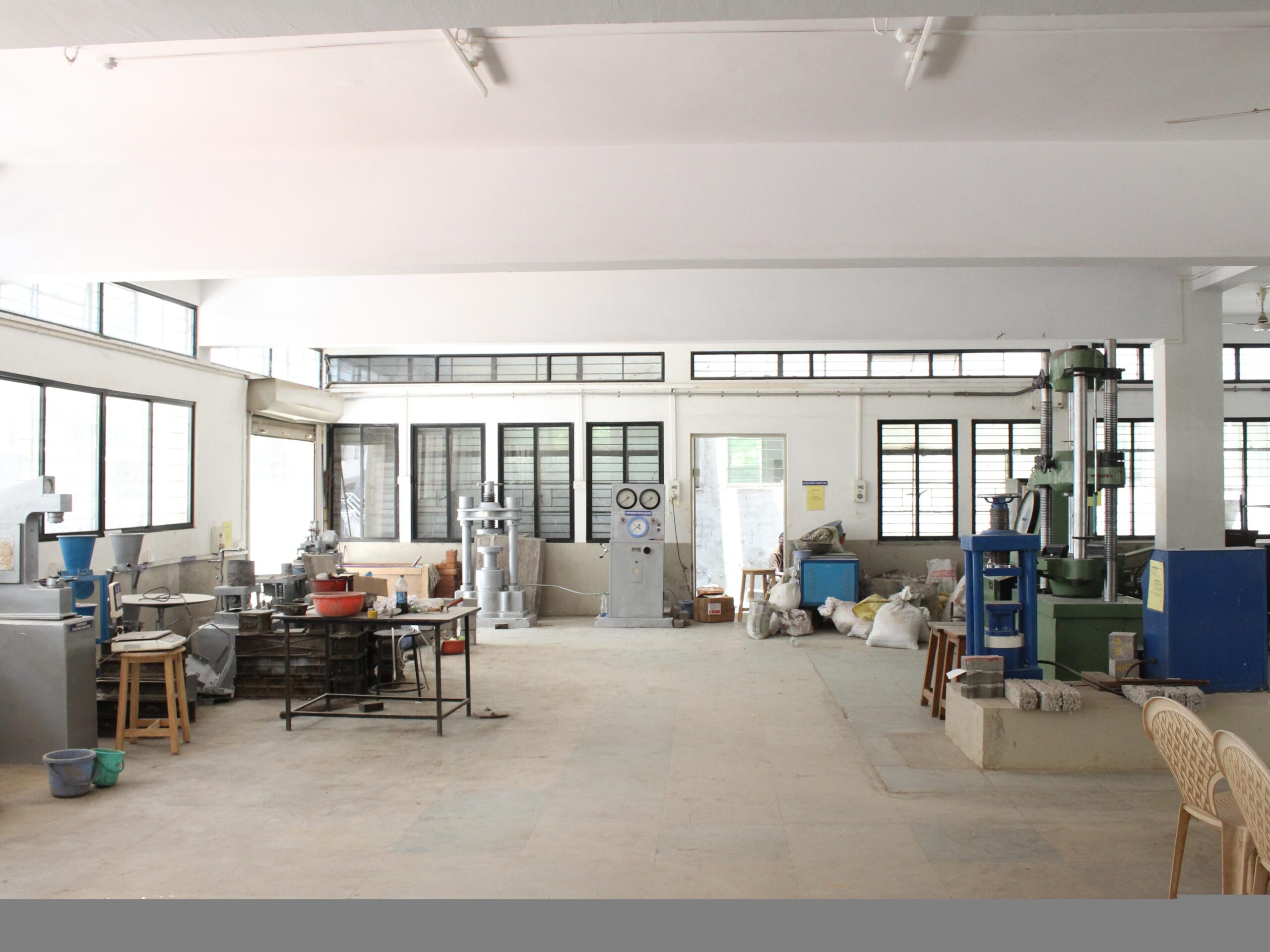Comprehensive Material Testing Lab: Your Companion for Exact Quality Control
Comprehensive Material Testing Lab: Your Companion for Exact Quality Control
Blog Article
Advancements in Material Screening for Unprecedented Efficiency
In today's quickly progressing world, where technical developments are reshaping markets and pressing the boundaries of what was once deemed impossible, the demand for products that can hold up against extraordinary problems and deliver phenomenal efficiency has become increasingly critical. As designers and researchers strive to develop next-generation products, the capability to accurately check and assess their homes has never ever been more essential. This brings us to the appealing realm of innovations in material screening, where ingenious techniques and sophisticated approaches are revolutionizing the method we understand and maximize material performance. From non-destructive screening techniques to the assimilation of synthetic knowledge, the possibilities appear endless. Let us begin on this trip of exploration, as we discover the exceptional advancements in material testing and their possible to form the future of various markets.
Non-Destructive Examining Methods
Non-destructive testing methods are crucial for evaluating the integrity and integrity of products without creating any type of damage. These techniques play an essential role in various sectors, consisting of aerospace, vehicle, building, and manufacturing. By making use of non-destructive testing methods, designers can assess the homes and characteristics of products, ensuring that they fulfill the called for criteria and specs.

An additional widely used technique is magnetic bit screening (MT), which is mainly made use of for identifying surface and near-surface flaws in ferromagnetic products. By applying an electromagnetic field to the material and after that introducing magnetic bits, any kind of defects present can be quickly determined. MT is specifically effective for spotting fractures, absence of blend, and various other surface area abnormalities.
Advanced Products Characterization Approaches
Advanced products characterization approaches are important tools for assessing the residential properties and efficiency of products in different markets. These techniques include the usage of advanced methods to examine and comprehend the microstructure, structure, and behavior of materials at the atomic and molecular degrees. By using innovative characterization researchers, methods and engineers can obtain useful insights into the architectural stability, mechanical homes, thermal security, and chemical reactivity of products.
One commonly used method is scanning electron microscopy (SEM), which gives high-resolution pictures of a material's surface area. SEM permits the examination of the product's morphology, topography, and essential composition. An additional crucial technique is X-ray diffraction (XRD), which gives info about the crystal framework and phase make-up of materials. XRD is specifically beneficial for analyzing the setup of atoms in crystalline materials.
Additionally, transmission electron microscopy (TEM) makes it possible for researchers to observe the interior framework of materials with atomic resolution. TEM can exposing details such as grain dislocations, issues, and boundaries, offering crucial details about a product's mechanical homes - material testing lab. Additionally, spectroscopic methods like Fourier-transform infrared spectroscopy (FTIR) and Raman spectroscopy can be made use of to assess the chemical structure, molecular framework, and vibrational modes of materials
High-Temperature and Extreme Atmosphere Testing
In order to assess the performance of materials in high-temperature and extreme atmospheres, rigorous screening approaches are required. These testing techniques are made to mimic the conditions that materials may run into in real-life applications, such as aerospace, auto, and energy industries. High-temperature and severe atmosphere testing intends to analyze the actions of materials under extreme warmth, stress, and other difficult conditions.
One commonly made use of method for high-temperature screening is thermal analysis. This method includes subjecting the material to differing temperatures while determining its thermal homes, such as thermal development, warm ability, and thermal conductivity. By examining these residential properties, scientists can determine just how the material will act under different temperature level conditions, enabling them to select the most ideal products for particular applications.
One more important facet of high-temperature and severe environment screening is mechanical screening. This involves subjecting the product to mechanical stress at elevated temperatures, mimicing the conditions it may experience in real-world applications. Mechanical screening get redirected here helps review the product's toughness, resistance, and ductility to deformation and failure under extreme and high-temperature problems.
Additionally, environmental screening is important to assess the product's performance in extreme conditions, such as harsh atmospheres or direct exposure to extreme weather. This screening involves subjecting the product to various ecological factors, such as moisture, salt spray, and UV radiation, to evaluate its longevity and resistance to corrosion and destruction.

Simulation and Modeling for Product Performance
Simulation and modeling play a crucial duty in understanding and predicting the efficiency of products in different applications. With innovations in computational abilities, researchers and engineers can now replicate and design the behavior of products under various conditions, supplying valuable insights right into their efficiency and aiding in the advancement of brand-new products with enhanced buildings.
Through simulation and modeling, researchers can examine the tiny and macroscopic behavior of materials, including their mechanical, thermal, and electric buildings. This allows them to anticipate exactly how products will certainly act under different loads, temperatures, and ecological problems, without the demand for pricey and time-consuming experimental testing.
Simulation and modeling methods additionally make it possible for scientists to optimize material designs and identify important link prospective weaknesses or failure points. By examining the material's reaction to different forces and stimuli, engineers can make educated decisions about material selection and layout modifications to boost efficiency and resilience.
Additionally, simulation and modeling can aid in the development of materials for specific applications. In the aerospace sector, scientists can imitate the habits of products under severe temperature levels and pressures to create lightweight yet strong products for aircraft frameworks. In the medical area, simulation techniques can be utilized to study the communications between materials and biological tissues, leading to the growth of biocompatible materials for implants or medicine shipment systems
Assimilation of Expert System in Material Testing
The unification of Expert system (AI) into product screening has revolutionized the area, allowing scientists to accomplish unprecedented precision and effectiveness in evaluating product performance. AI formulas can process and analyze big amounts of information, determining patterns and correlations that might not be right away apparent to human researchers. This enables more precise and thorough testing, bring about a deeper understanding of product behavior.
One application of AI in material screening is in the growth of anticipating models. By educating AI algorithms on vast datasets of product residential properties and efficiency, scientists can create designs that can precisely predict the actions of brand-new materials under various conditions. This can considerably speed up the material advancement procedure, as it allows researchers to display and prioritize products with preferred residential or commercial properties.
Along with predictive modeling, AI can additionally be utilized to maximize testing treatments. By analyzing historic screening data, AI formulas can recognize the most reliable and useful examinations to execute, decreasing the moment and sources required for material examination.
Moreover, AI can assist in the identification of abnormalities or defects in products. By contrasting examination outcomes versus expected outcomes, AI algorithms can discover discrepancies and sharp scientists to potential problems. This can assist improve top quality control procedures and ensure using products that satisfy the needed specs.
Verdict

By evaluating these homes, researchers can identify how the product will certainly act under different temperature problems, allowing them to choose the most appropriate materials for specific applications.
The unification of Artificial Knowledge (AI) right into material screening has actually reinvented the field, enabling scientists to accomplish unmatched accuracy and performance in examining material efficiency.In verdict, improvements in material screening methods, characterization methods, severe and high-temperature environment screening, and the combination of synthetic knowledge have read here greatly added to the advancement of unprecedented efficiency in materials. These innovations have permitted for the identification of product residential properties and behaviors, making it possible for the style and optimization of products for different applications. material testing lab. With more research study and technical developments, product testing will certainly continue to play a critical role in pressing the boundaries of product performance
Report this page